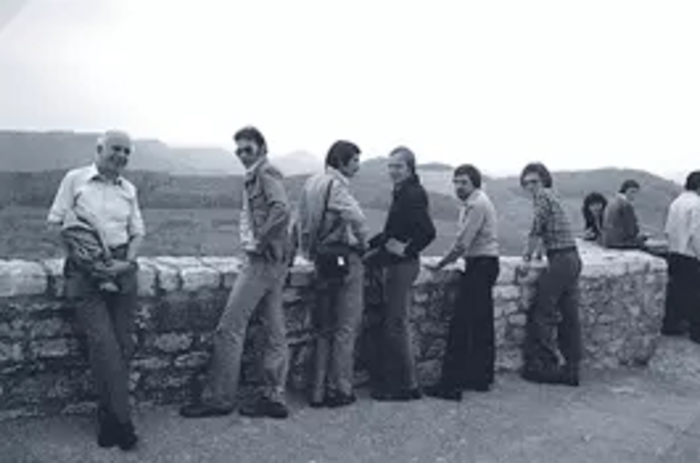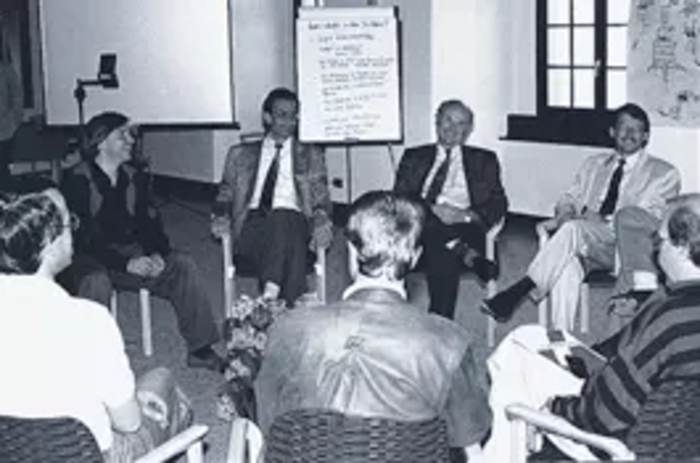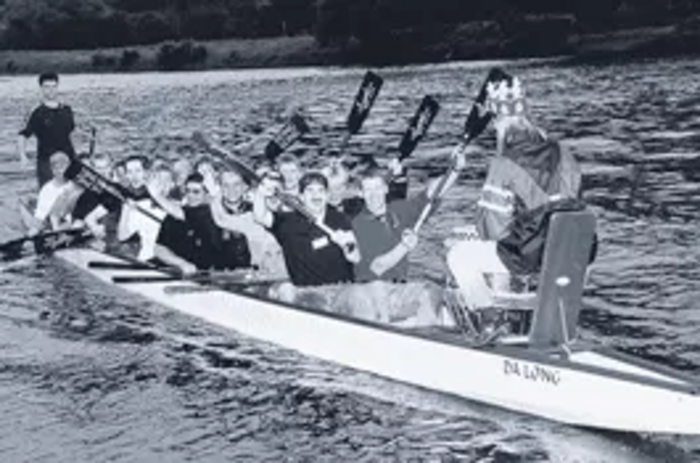History of Drees & Sommer Switzerland
With the aim of further expanding its international range of project management, consulting and engineering services, Drees & Sommer opened its first Swiss office in Zurich on 1 October 2008. Drees & Sommer now has almost 250 employees in Switzerland at its offices in Zurich, Basel and Lausanne.
As entrepreneurs within the company, the employees are customer-orientated, responsible and make full use of their decision-making scope. Anyone who works with them on projects can sense the special "Drees & Sommer spirit".
Growth and expansion
Today, Drees & Sommer's beginnings in Switzerland would be described as a classic start-up: A small, highly motivated and competent team takes on a major challenge. Although the first office was not a garage like Apple's, it came very close. Driven by a shared vision, the Drees & Sommer team managed to successfully realise two outstanding major projects in Switzerland in the first few years: The 5-star superior hotel "The Chedi" in Andermatt and the office tower "Bau 1" for F. Hoffmann-La Roche AG in Basel.
These flagship projects were followed by others, and as the number of employees grew, so too did the range of services. While the initial focus was still very much on general planning and construction management services, expertise in the field of engineering has been continuously built up in recent years. The integration of RBS Projektmanagement (Schweiz) GmbH in 2016 further contributed to the expansion of the service portfolio. This means that interesting and forward-looking workplace consulting projects can now also be supported directly from Switzerland. The company added the final building block to complete its range of services with the acquisition of RESO Partners AG: With the new colleagues from Real Estate Consulting, Drees & Sommer Schweiz AG offers complete services from a single source, covering the entire life cycle of properties in a wide range of sectors.
Company History Drees & Sommer SE
In 1970, in Stuttgart, Gerhard Drees founded a small engineering company. At that time, he and his co-founder, Hans Sommer, could never have imagined that their three-person team would grow over time into an international company with more than 6,500 employees. To this day, Drees & Sommer continues to be characterized by the ability to innovate and to "think outside the box".
As entrepreneurs within the company, employees are customer-oriented and act responsibly, making full use of their scope for decision-making. Anyone who works with the company on any project will be aware of the special "Drees & Sommer Spirit".



A Passion for Properties
The new decade begins with a global crisis: the coronavirus pandemic shows just how vulnerable the globalized world is. But thanks to digital tools, Drees & Sommer remains connected and supports its customers even in challenging times.
The buildings of tomorrow are already standing: Drees & Sommer is making its existing buildings fit for the future with holistic solutions. Methods such as serial refurbishment play a key role.
Heavy rainfall, flooding, extreme heat: the effects of climate change are becoming increasingly noticeable. The EU is trying to counteract this with the Green Deal. Regulation is putting companies and organizations under increasing pressure - Drees & Sommer is helping them to implement ESG requirements. The experts bring future technologies such as green hydrogen or deep geothermal energy into the consulting process.
Sustainability and digitalization
The second decade of the new millennium is dominated by sustainability issues but also, first and foremost, by digitalization. Drees & Sommer is at the forefront in the work of developing innovative methods and technologies, such as Building Information Modeling (BIM), Lean Construction Management (LCM®) or the circular economy approaches for the construction and real-estate industries. As well as urban mobility, as another megatrend, the focus of the world of work once again returns to the people doing the work, who now increasingly demand city districts and healthy buildings that suit their own needs. With the addition of sites in Germany, the United Kingdom, the Netherlands and the Gulf region, the company is steadily pursuing its own national and international path for growth.
2019: Around 3,820 employees generate a turnover of approx. 500.1 million euros.
The Noughties
This decade sees a steep increase in international investors, profit maximization and trading in large real-estate packages. There's a boom in technical due diligence projects. Drees & Sommer determines the lifecycle costs of Private Public Partnership (PPP).
Sustainability is growing in importance. As one of the first participants in this market, Drees & Sommer designs and develops comprehensive and cost-effective solutions for sustainable construction, reduction of energy consumption and optimization of existing buildings. The company undertakes pioneering work in Green Building. Among other things, Drees & Sommer becomes a founding member of the DGNB (the German sustainable building council).
During this period, Drees & Sommer opens new sites in Bremen, Hanover, Kiel, Nuremberg, Dubai, Peking, Shanghai, Budapest, Warsaw, Moscow, St. Petersburg, Barcelona, Basel, Brussels, Istanbul, Copenhagen, Milan, Munsbach and Zurich.
2009: 1,120 employees generate a turnover of approx. 145 million euros.
Upturn
The early 1980s bring a dramatic upturn for Drees & Sommer, thanks to software-based scheduling and cost planning. Engineers are now also scrutinizing the operation of buildings and advising customers on energy and economic efficiency issues. The partnership system, which is still in place today, was started in 1988. Partners manage individual locations as entrepreneurs, in accordance with standardized rules, adapted to existing regional practices. Drees & Sommer establishes new premises in Hamburg and Frankfurt.
1989: 180 employees generate a turnover of 20 million euros.
Pioneering Spirit
In the early 1970s, Drees & Sommer successfully applies the new critical path method to construction projects. A breakthrough for the industry - from now on, schedules can be planned with far greater precision. Construction processes are becoming safer and more cost-effective. The first site in Stuttgart is followed by new premises in Düsseldorf, Munich and Cologne, as well as the first project offices in Saudi Arabia and Qatar.
1979: 30 employees generate a turnover of 3 million euros.